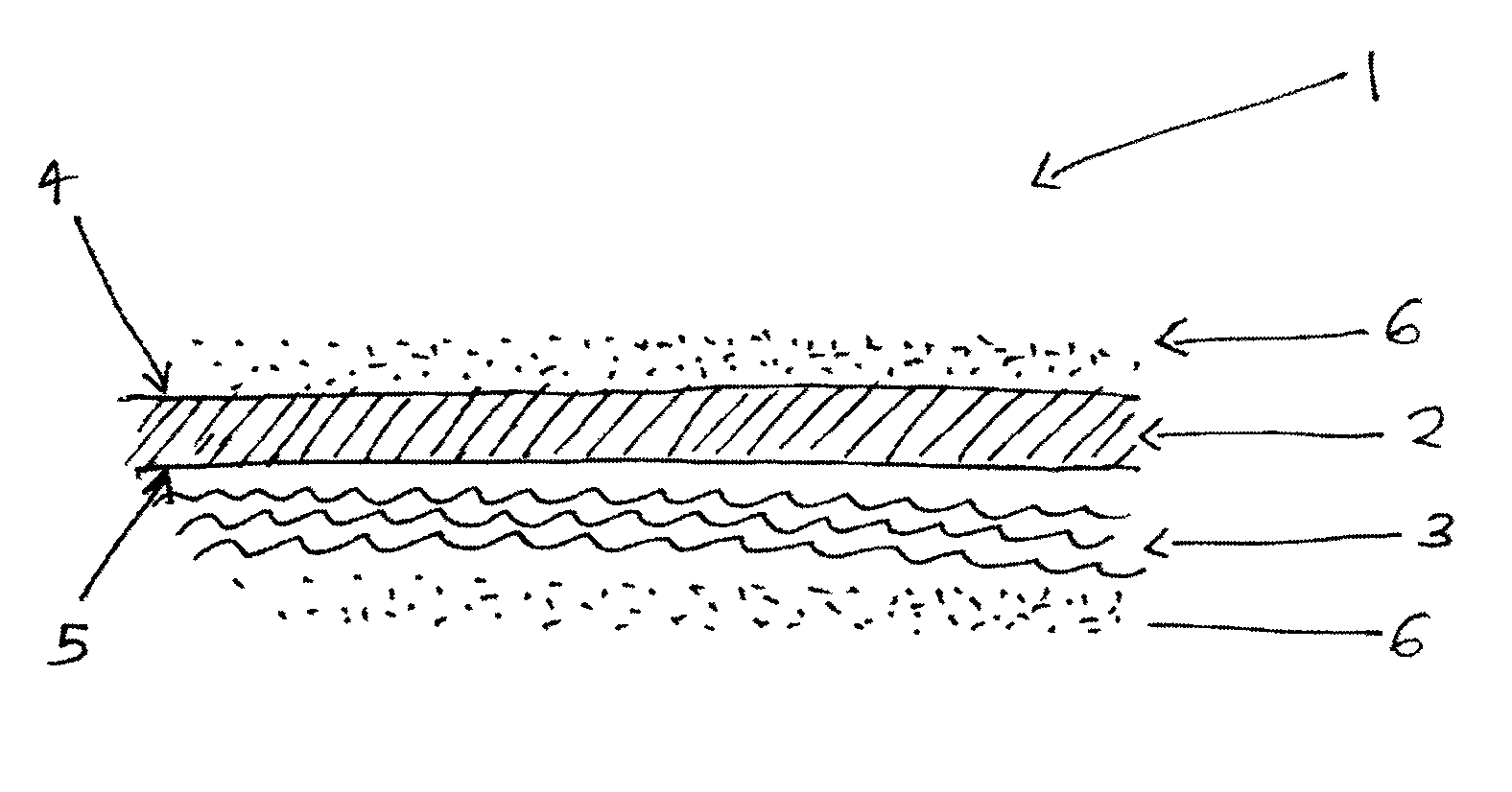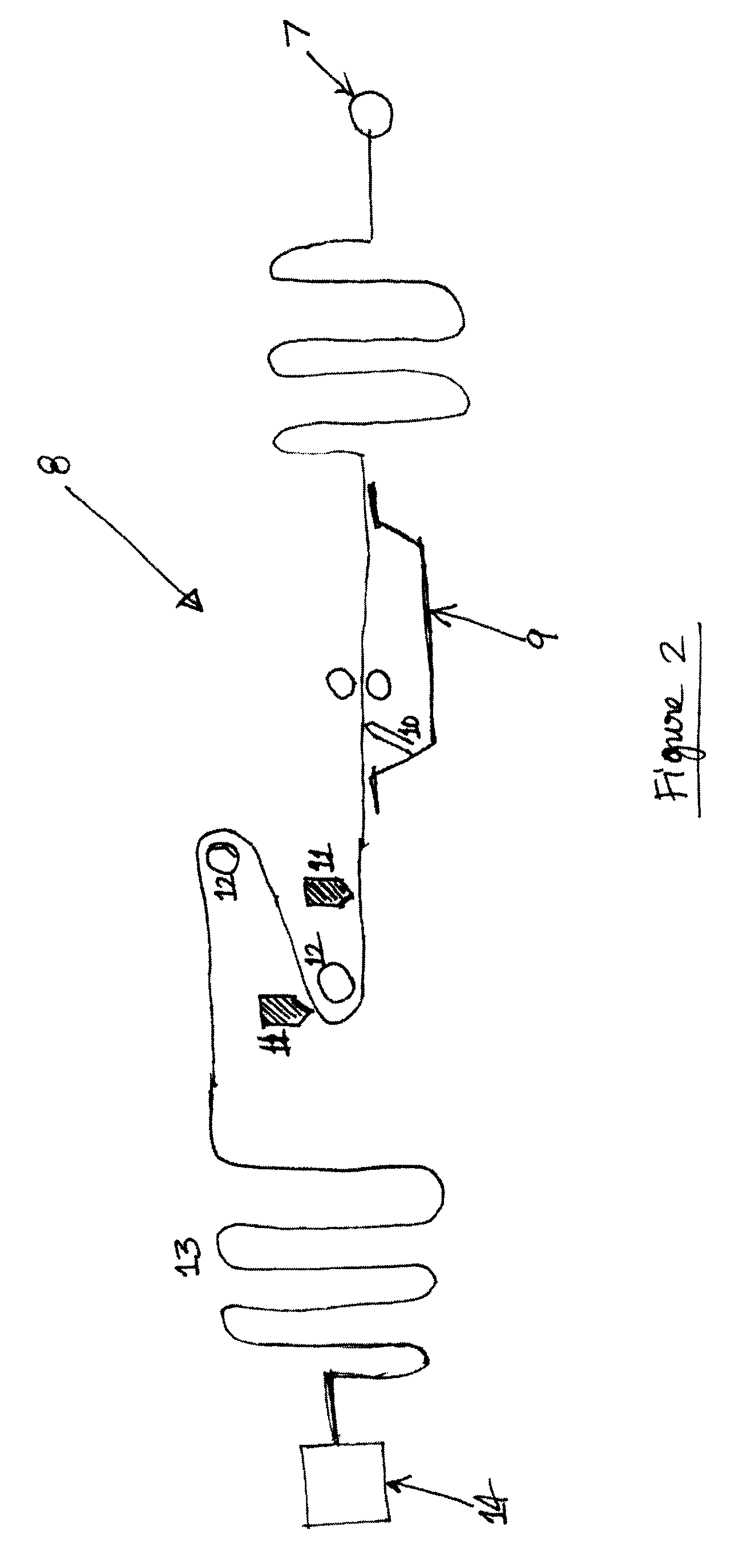Roofing underlayment and method of producing same
a technology of underlayment and roof, which is applied in the direction of synthetic resin layered products, weaving, transportation and packaging, etc., can solve the problems of not being used anymore, poor tensile strength, and felts with several limitations, so as to eliminate the possibility of delamination
- Summary
- Abstract
- Description
- Claims
- Application Information
AI Technical Summary
Benefits of technology
Problems solved by technology
Method used
Image
Examples
example 1
[0039]A mat of non-woven polyester having a net mass per unit area of approximately 100 grams per square meter was coated with an asphaltic material having a softening point of approximately 110 degrees and comprised of 9% by weight of saturant asphalt, 49.8% by weight of blown coating asphalt, 1.2% by weight of Styrene-Butadiene-Styrene elastomer, and 40% by weight of limestone filler. Excess asphaltic material was scraped off to leave a minimal amount of asphaltic material on the mat. Following this application, an LPA, Anti-Tak 40, was applied to the top surface of the polyester mat and to the exposed surface of the layer of asphaltic material. The coated mat had a net mass per unit area of about 10.5 lbs. per 100 square feet. The top side of the mat was left untreated, i.e., uncoated with asphaltic material, during the production process. It was found that the roofing material made as described above, formed an excellent underlayment when used in roofing applications.
[0040]Anoth...
example 2
[0049]A non-woven polyester mat having a net mass per unit area of approximately 100 grams per square meter was coated with an asphaltic material having a softening point of approximately 110 degrees. The asphaltic material had the following composition: 9% by weight of saturant asphalt, 49.8% by weight of blown coating asphalt, 1.2% by weight of Styrene-Butadiene-Styrene elastomer, and 40% by weight of limestone filler. Excess asphaltic material was scraped off to leave a minimal layer of asphaltic material on the mat. Following this application, a thin layer of an asphaltic adhesive coating was applied lengthwise for a width of 2 to 4 inches along one edge on the top side of the mat. The asphaltic adhesive coating was covered by a siliconized release liner. Later LPA, Anti-Tak 40, was applied to the top surface of the polyester mat and to the exposed surface of the asphaltic material layer. The coated mat had a net mass per unit area of about 11 lbs. per 100 square feet. It was fo...
PUM
| Property | Measurement | Unit |
|---|---|---|
| softening point | aaaaa | aaaaa |
| softening points | aaaaa | aaaaa |
| softening points | aaaaa | aaaaa |
Abstract
Description
Claims
Application Information
 Login to View More
Login to View More - R&D
- Intellectual Property
- Life Sciences
- Materials
- Tech Scout
- Unparalleled Data Quality
- Higher Quality Content
- 60% Fewer Hallucinations
Browse by: Latest US Patents, China's latest patents, Technical Efficacy Thesaurus, Application Domain, Technology Topic, Popular Technical Reports.
© 2025 PatSnap. All rights reserved.Legal|Privacy policy|Modern Slavery Act Transparency Statement|Sitemap|About US| Contact US: help@patsnap.com



